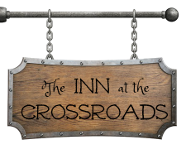“Cersei set a tasty table, that could not be denied. They started with a creamy chestnut soup, crusty hot bread, and greens dressed with apples and pine nuts.” -A Clash of Kings

Greens w/Apples & Pine Nuts
Thoughts:
Wonderful.
I had been putting off many of the salad recipes for lack of inspiration, but no more. This is a terrific salad! The apple slices are the star of the dish, but wouldn’t be nearly as amazing without the cheese and dressing. Creamy cheese between bites of crunchy apple, tangy dressing over soft pine nuts and pomegranate seeds bursting with color: the whole dish is a textural and taste powerhouse that’s as delicious as it is healthy. How could it get any better?







 Roman Mustard
Roman Mustard



 “In the airy chambers beneath the rookery, his girl served them boiled eggs, stewed plums, and porridge, while Pycelle served the pontifications.” -A Clash of Kings
“In the airy chambers beneath the rookery, his girl served them boiled eggs, stewed plums, and porridge, while Pycelle served the pontifications.” -A Clash of Kings
